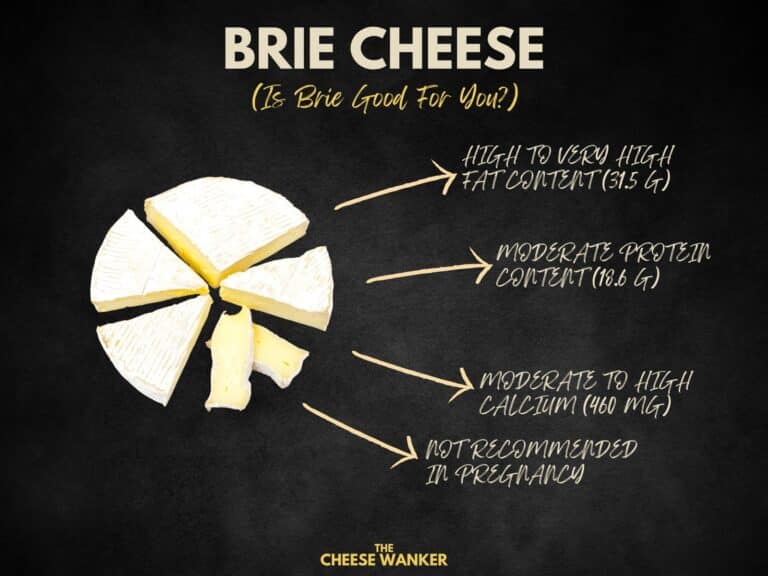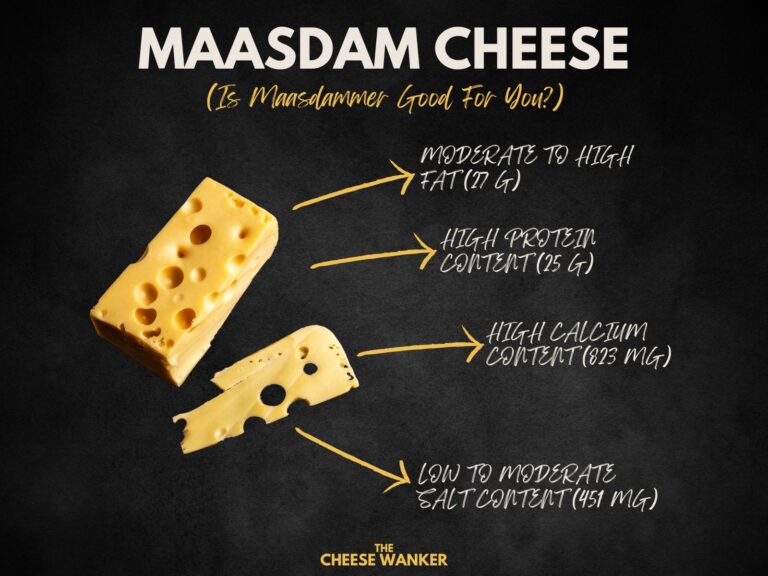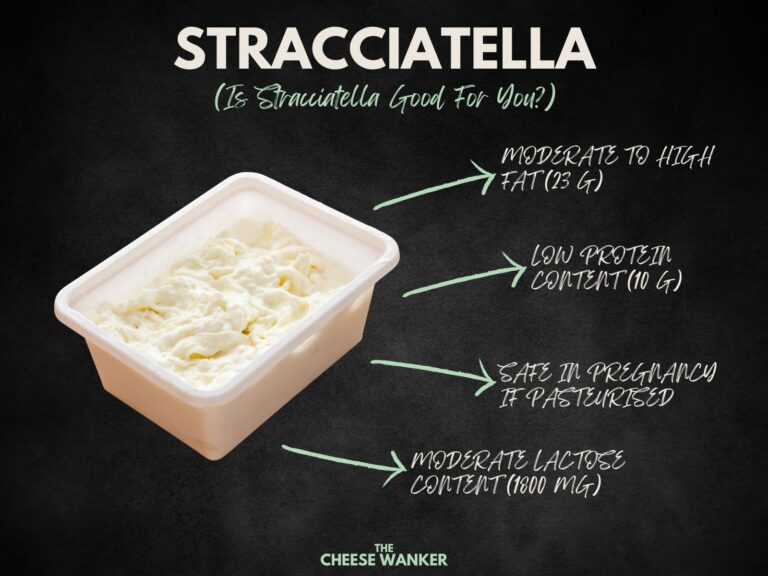Grana Padano, a renowned Italian cheese, has captivated the taste buds of cheese connoisseurs worldwide. However, beyond its delightful flavour and rich heritage, it is crucial to explore its nutritional composition to fully appreciate its impact on our health. In this blog post, we delve into the nutrition facts for Grana Padano.
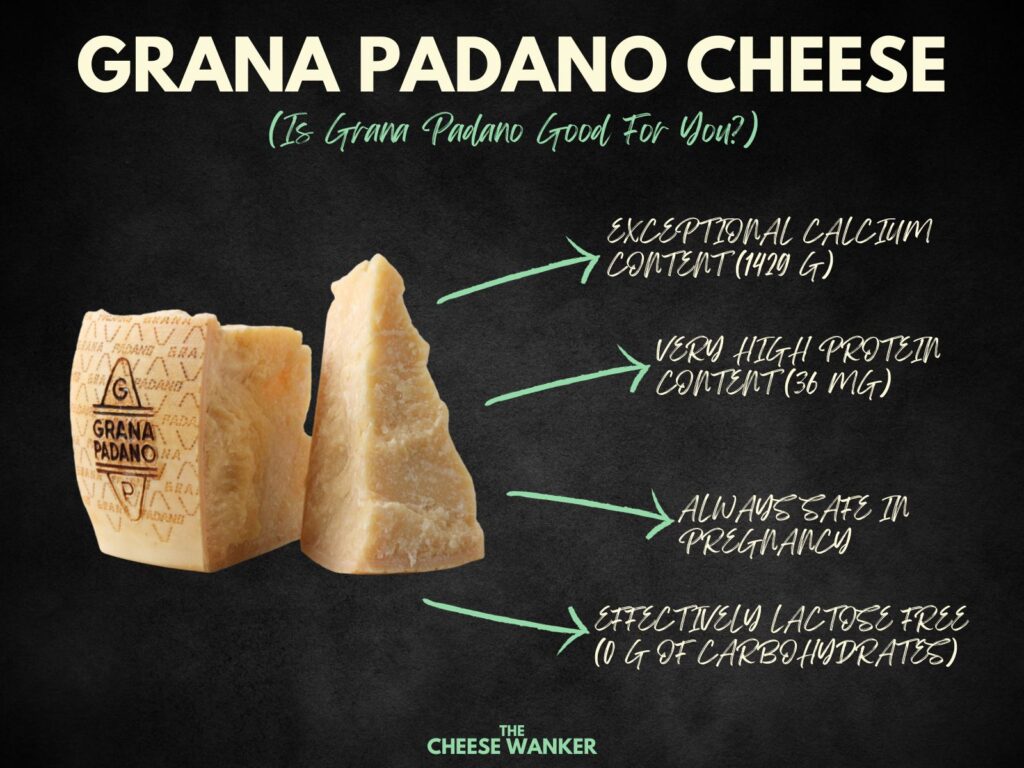
SEE ALSO: Nutrition facts for popular world cheeses in The Cheese Wanker’s index →
What is Grana Padano?
Grana Padano is a hard, grana-style cheese originating from the Po River Valley in northern Italy. Produced from partially skimmed cow’s milk, it undergoes a meticulous aging process, resulting in a crumbly texture and a complex, nutty flavour.
This cheese is highly regarded for its versatility in culinary applications, be it grating over pasta, complementing salads, or savouring on its own.
Nutrition fact sheet
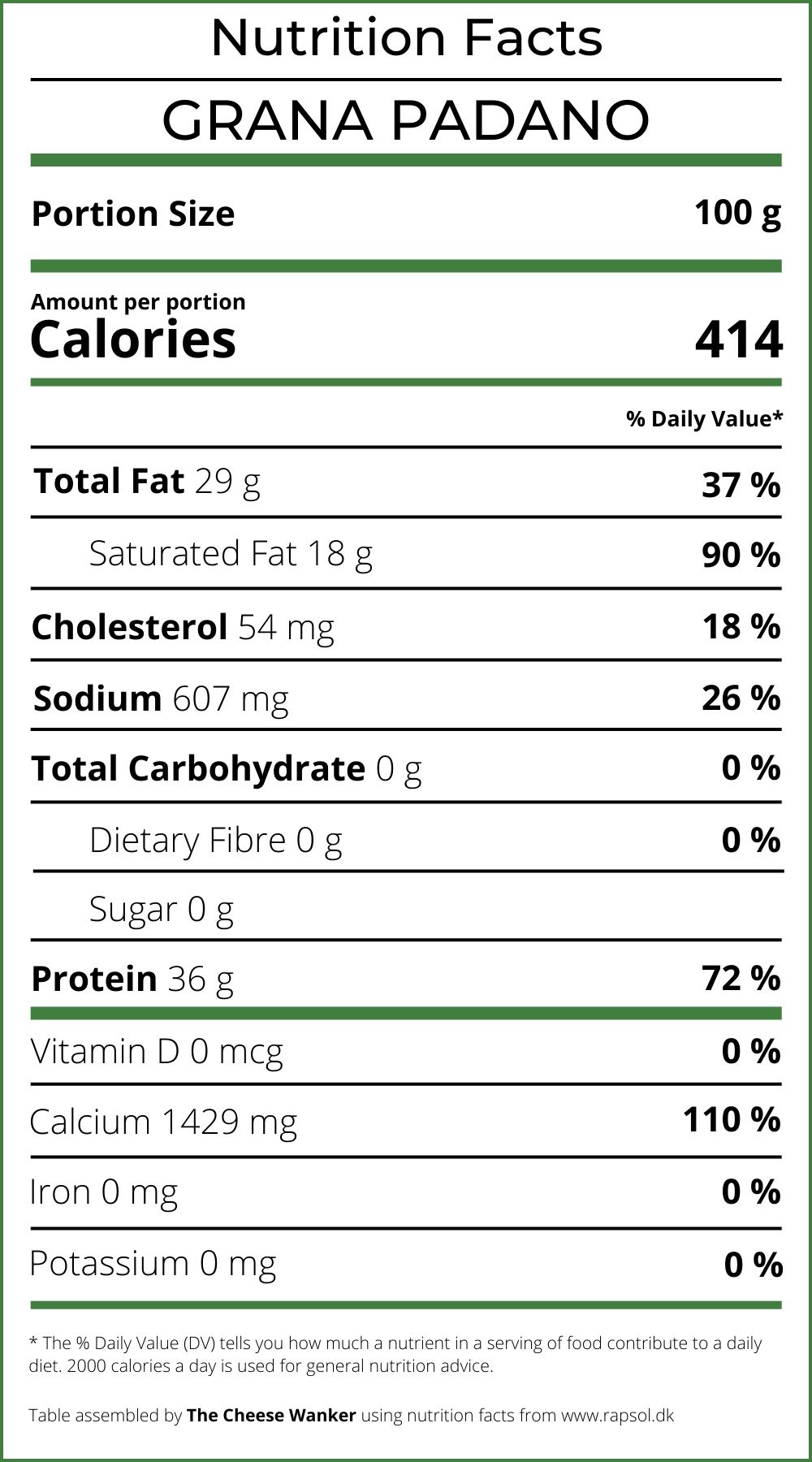
Nutritional review for Grana Padano
Eating healthy plays a pivotal role in maintaining overall well-being and preventing chronic diseases. A balanced and nutritious diet provides our bodies with essential vitamins, minerals, and macronutrients, fuelling optimal physical and cognitive function.
With this in mind, let’s have a look at some of the key nutrition facts for Grana Padano.
Lactose Intolerance
One remarkable characteristic of Grana Padano is its minimal lactose content. The ageing process significantly reduces the lactose content, making it easily digestible for those with lactose intolerance.
Consequently, individuals with lactose intolerance can confidently enjoy Grana Padano without discomfort. This attribute distinguishes it from other dairy products, making it a favourable choice for lactose-intolerant individuals seeking a rich and flavourful cheese.
Fat Content
Additionally, it is important to note that Grana Padano contains a moderate fat content. This makes it a suitable choice for individuals aiming to strike a balance between flavour and health. Moreover, its 29 g of fat per 100 g serving make this grana cheese a great option for people following a ketogenic diet.
While fat is an essential nutrient, it is vital to consume it in moderation. The active lifestyle of the cows grazing in the Po River Valley, coupled with the cheese’s ageing process, contributes to the presence of healthy fats in Grana Padano.
These fats provide a source of energy and aid in the absorption of fat-soluble vitamins, benefiting overall health when consumed as part of a balanced diet.
You can learn more about the different types of fat in cheese and which cheeses have the lowest fat content here.
Cholesterol Content
In recent years, the significance of maintaining healthy cholesterol levels has gained prominence. Grana Padano presents a favourable option for individuals mindful of their cholesterol intake.
It contains lower cholesterol levels (54 mg per 100 g) compared to some other aged cheeses, making it an appealing choice for those seeking to enjoy a delectable cheese without excessive cholesterol impact. Moreover, incorporating Grana Padano into a well-rounded diet can support a heart-healthy lifestyle.
Protein Content
Furthermore, Grana Padano’s impressive protein content is a significant attribute that enhances its nutritional value. Protein is essential for numerous bodily functions, including muscle repair, enzyme production, and immune system support.
With approximately 36 grams of protein per 100 grams, Grana Padano serves as an excellent source of high-quality protein. Consequently, incorporating Grana Padano into your diet can contribute to muscle repair and maintenance, making it a favourable choice for individuals engaged in physically demanding activities or seeking to optimize their protein intake.
Want to find out which cheeses have the highest protein content? Click here for our blog post covering cheeses with the highest protein content.
*Safety in Pregnancy
Pregnancy requires particular attention to nutrition, and certain food choices warrant careful consideration. Fortunately, Grana Padano can be safely enjoyed by expectant mothers.
The cheese undergoes an extended ageing period, minimising the risk of harmful bacteria. Moreover, its nutritional composition, including calcium and protein, contributes to the healthy development of the foetus. Consequently, expectant mothers can safely savour Grana Padano cheese throughout their pregnancy, adding a flavourful touch to their dietary choices.
You can read more about which cheeses you can eat when you’re pregnant by clicking here. As always, if unsure, you should consult your doctor.
Salt Content
While Grana Padano is a versatile and flavourful cheese, its salt content necessitates moderation in consumption. Like many aged cheeses, Grana Padano undergoes a salt brining process, imparting its characteristic taste.
However, excessive sodium intake can have adverse effects on blood pressure and cardiovascular health. Hence, it is crucial to consume Grana Padano mindfully and balance it with other low-sodium foods to maintain a healthy diet.
Conclusion
Grana Padano, with its unique flavour and texture, offers not only a culinary delight but also a host of nutritional benefits. With minimal lactose content, moderate fat content, lower cholesterol levels, and high-quality protein, it stands as an excellent choice for those seeking a balanced diet.
Additionally, its safety during pregnancy makes it a versatile ingredient for expectant mothers. However, its salt content calls for moderation to ensure a healthy sodium balance.
Embracing the nutritional facts of Grana Padano enables us to appreciate its value in maintaining a wholesome lifestyle while indulging in its irresistible taste.
What’s your favourite way to enjoy this Italian cheese? Let us know in the comments below.
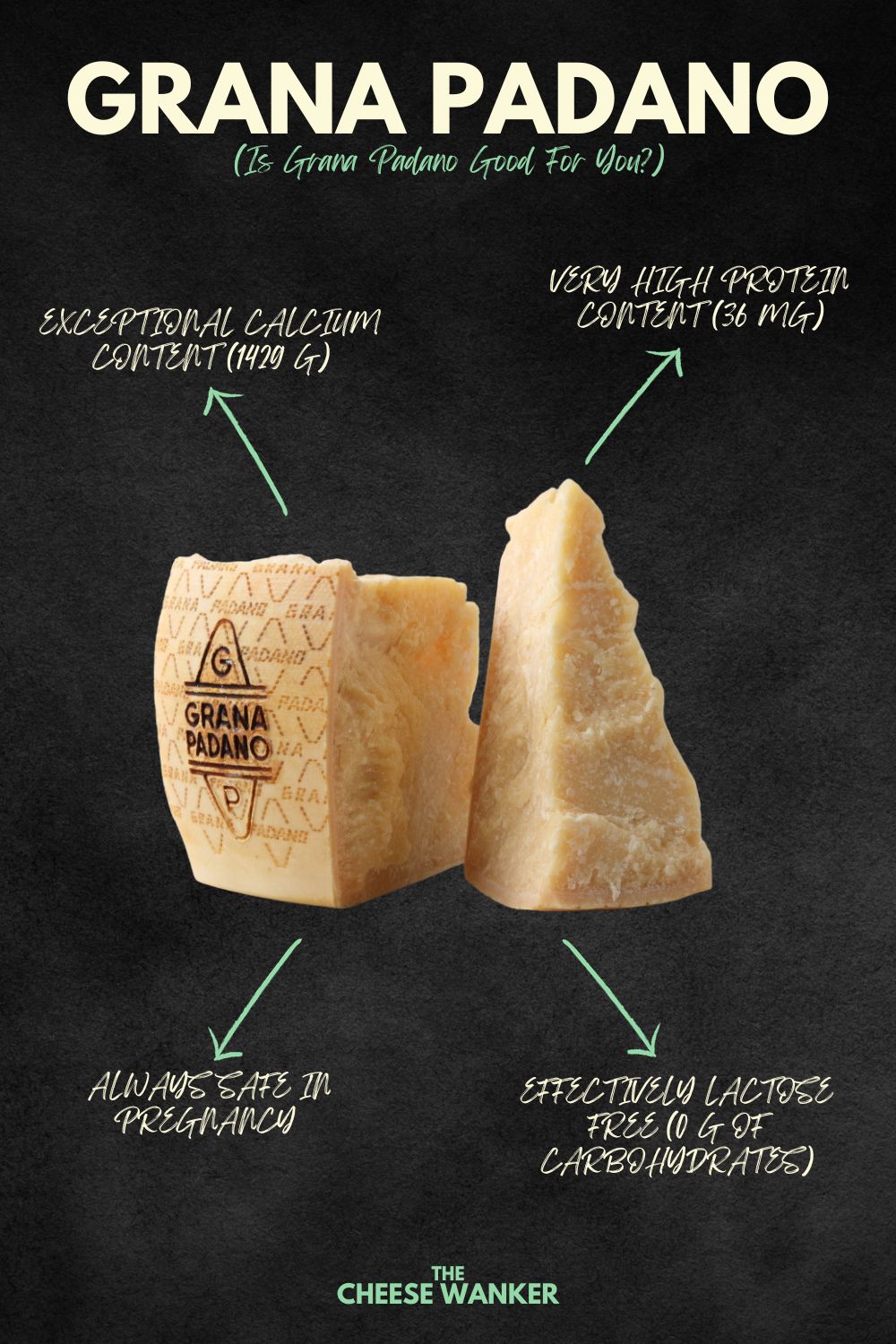
References
Overall nutritional content
The nutritional content of cheese in our table comes from the USDA Food Data Central Repository, the Australian Food Composition Database and cheese manufacturers. We realise that there can be variations between different brands and producers. Hence, the numbers we have used are averages.
Fat content
Our fat RDI data comes from Cleveland Clinic’s Healthy Fat Intake resource.
Type of fat in cheese as per Harvard T.H. Chan’s The Nutrition Source.
Protein content
Our protein RDI data comes from Harvard Medical School’s Harvard Health Publishing.
Cholesterol content
Is There a Correlation between Dietary and Blood Cholesterol? Evidence from Epidemiological Data and Clinical Interventions? – Maria Luz Fernandez and Ana Gabriela Murillo
Saturated fat, carbohydrate, and cardiovascular disease – Patty W Siri-Tarino, Qi Sun, Frank B Hu and Ronald M Krauss
Effect of cheese consumption on blood lipids: a systematic review and meta-analysis of randomized controlled trials – Janette de Goede, Johanna M Geleijnse, Eric L Ding, Sabita S Soedamah-Muthu
Safety in pregnancy
All the advice relating to what cheeses you can eat during pregnancy in this article is based on the recommendations by health authorities in Australia, the UK and the USA. If you are unsure about what you can or cannot eat, please consult your doctor.
Australia – FSANZ, United Kingdom – NHS and United Sates of America – FDA
Lactose content
Lactose residual content in PDO cheeses
Detection of lactose in products with low lactose content
The analysis of lactose in milk and cheese products by HPLC
Food Standards ANZ Food Composition Database
Lactose & Galactose content of cheese
